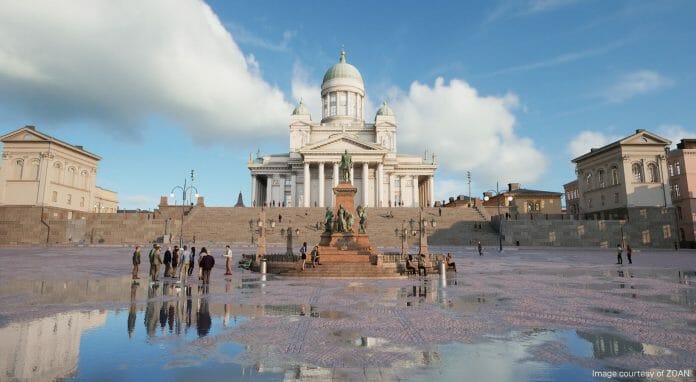
By Quentin Staes-Polet, General Manager, SEA and India, Epic Games
Architecture is a craft that combines creativity, precision, and a whole lot of collaboration. In a post-pandemic world, this work is further complicated since travel and face-to-face meetings continue to be limited. What’s more, deadlines seem to have gotten shorter and shorter, with everything expected to be done online and instantaneously.
The industry is inescapably linked to property, which faces buyer uncertainty now more than ever. Unhelped by the current economy and forced distancing, an option to view and experience interiors in immersive 3D is surely beneficial.
Today, how people and technology work in this space has opened up an array of opportunities and created a fundamental shift in how architectural practices are run. The towering skyscrapers we see around us are never the result of one person’s vision, but the collective expertise and insight of multiple groups translated into a single physical space, whilst real-time technology and virtual reality can help bring the design vision to life —even before the project breaks ground.
Leveraging Real-time Technology From The Get-Go
At the start of the architectural life cycle, teams try to convey big ideas to clients, which is when real-time technology helps keep projects on-time and on-budget. Urban projects with ever-shifting constraints benefit greatly from real-time simulations.
For example, the British architecture practice, Allford Hall Monaghan Morris (AHMM) leveraged real-time technology to test some virtual models for their latest project in a high-profile city-center location. The prime location meant it was important to ensure the final building fit into the context of the existing landscape, essential to testing the viability of designs. The use of real-time rendering made collaboration across stakeholders faster and smoother, with visuals updated in a matter of mere hours.
Ramping Up Real-time Virtual Reality — Immersive Marketing
This is where advanced technology can help. One example is real-time rendering technology, which can help iterate design visions to perfection even before the actual building process starts. Interestingly, while the use of such technology in architecture has existed for a while, it has largely been regarded as a nice-to-have and seen overall as a niche presentation method.
Research by GlobalData says that the APAC region is to drive global enterprise VR adoption through to 2030, projecting a significant rise in their uptake in the region, especially around the market growth for non-gaming software, such as those used in architecture and property.
The impact of real-time technology in the architecture industry also extends to customer-facing applications. For example, homebuyers are often wary when buying an unbuilt home off the plan, and need to exercise their imagination in order to understand the space. Artists’ impressions, showflats and 2D impressions do help, but estate agents, developers, and interior designers have their work cut out for them in building buyer confidence.
Real-time technology can help remove the guesswork. It allows homebuyers to view modeled interiors, specific floorplans and get a feel of the space during different times of the day.
For an even more complete and immersive experience, a VR headset can be used to help the customer ‘experience’ the space before making a down payment. For the real estate industry, this means a significant reduction in customer acquisition time and the ability to easily showcase different fittings and finishes based on the customers’ preferences.
Malaysia is bound to witness a strong adoption trend in future, aided by high-speed 5G network deployment. The burgeoning ecosystem of connected devices, which is estimated to grow further, as well as ample government support will drive the general VR adoption in the country—fastening its presence in the architecture industry.
Powering Collaboration In Architecture
As the number of large-scale, cross-border projects increase, today’s architectural practices need to be able to make changes in real-time without time-consuming internal review cycles.
Often, it is the lack of a collaborative process that threatens to derail timelines and budget—as architects, engineers, and builders, driven by differing subjective perspectives, must now come eye to eye on every minute detail. In the architecture and construction industry, the devil truly lies in the details.
Here, real-time technology can come in to allow users to conduct multi-user editing and review sessions remotely. Teams can share designs with the various stakeholders for review and iterate on the feedback together. This enables different departments to work together and make changes on the spot, enhancing the efficiency of the creative process, and speeding up the time-to-market.
The use of visualisation software, with the ability to handle large data sets in real-time, can even be scaled and extended in smart city planning, urban construction and infrastructure and even creating digital twins such as this virtual 3D replica of Helsinki.
Real-time visualisation technology allows industry professionals unparalleled precision—allowing them to iterate in pursuit of their creative vision—without worrying about missed features or costly mistakes, while supporting the business through greater efficiency and productivity.
The future beckons
While the use of technology in architecture and property has existed for a while, it has largely been regarded as a nice-to-have and seen overall as a niche presentation method. However, today the presence of advanced technology has enabled these fields to fast forward, from producing immersive visualisation to enhancing collaboration. This is most relevant and necessary in current conditions, revolutionising the way we can survive the unforeseen.








